Smaller, kompakt, personal. Non-stop techno-pop tunes on “Electric Cafe;” real earworms. Set apart from Eighties synthesizer music altogether, Kraftwerk are in a league of their own, as they typically are.
Industrial rhythms mentioned in early tracks are still prevalent, though more sterilized than “Trans-Europe Express” perhaps? Cleaner, deeper, still sparse. Minimum-Maximum. And non-stop. Techno-pop tunes on Electric Cafe; smaller, kompact, personal. Synthesizer music by Kraftwerk, typically real earworms.
Kraftwerk; smaller, kompact, personal. Minimum Maximum. “Electric Cafe;” industrial rhythms, perhaps cleaner, deeper and sparser than “Trans-Europe Express?” And non-stop! And non-stop!
Typically in a league of their own, Kraftwerk are smaller, kompact, personal on “Electric Cafe.” And non-stop techno-pop tunes are still prevalent; though more sterilized industrial rhythms are cleaner, deeper. And non-stop. Set apart from Eighties synthesizer music.
Smaller, kompakt, personal. Non-stop techno-pop tunes on “Electric Cafe;” real earworms. Set apart from Eighties synthesizer music altogether, Kraftwerk are in a league of their own, as they typically are.
Industrial rhythms mentioned in early tracks are still prevalent, though more sterilized than “Trans-Europe Express” perhaps? Cleaner, deeper, still sparse. Minimum-Maximum. And non-stop. Techno-pop tunes on Electric Cafe; smaller, kompact, personal. Synthesizer music by Kraftwerk, typically real earworms.
Kraftwerk; smaller, kompact, personal. Minimum Maximum. “Electric Cafe;” industrial rhythms, perhaps cleaner, deeper and sparser than “Trans-Europe Express?” And non-stop! And non-stop!
Typically in a league of their own, Kraftwerk are smaller, kompact, personal on “Electric Cafe.” And non-stop techno-pop tunes are still prevalent; though more sterilized industrial rhythms are cleaner, deeper. And non-stop. Set apart from Eighties synthesizer music.
Smaller, kompakt, personal. Non-stop techno-pop tunes on “Electric Cafe;” real earworms. Set apart from Eighties synthesizer music altogether, Kraftwerk are in a league of their own, as they typically are.
Industrial rhythms mentioned in early tracks are still prevalent, though more sterilized than “Trans-Europe Express” perhaps? Cleaner, deeper, still sparse. Minimum-Maximum. And non-stop. Techno-pop tunes on Electric Cafe; smaller, kompact, personal. Synthesizer music by Kraftwerk, typically real earworms.
Kraftwerk; smaller, kompact, personal. Minimum Maximum. “Electric Cafe;” industrial rhythms, perhaps cleaner, deeper and sparser than “Trans-Europe Express?” And non-stop! And non-stop!
Typically in a league of their own, Kraftwerk are smaller, kompact, personal on “Electric Cafe.” And non-stop techno-pop tunes are still prevalent; though more sterilized industrial rhythms are cleaner, deeper. And non-stop. Set apart from Eighties synthesizer music.
Smaller, kompakt, personal. Non-stop techno-pop tunes on “Electric Cafe;” real earworms. Set apart from Eighties synthesizer music altogether, Kraftwerk are in a league of their own, as they typically are.
Industrial rhythms mentioned in early tracks are still prevalent, though more sterilized than “Trans-Europe Express” perhaps? Cleaner, deeper, still sparse. Minimum-Maximum. And non-stop. Techno-pop tunes on Electric Cafe; smaller, kompact, personal. Synthesizer music by Kraftwerk, typically real earworms.
Kraftwerk; smaller, kompact, personal. Minimum Maximum. “Electric Cafe;” industrial rhythms, perhaps cleaner, deeper and sparser than “Trans-Europe Express?” And non-stop! And non-stop!
Typically in a league of their own, Kraftwerk are smaller, kompact, personal on “Electric Cafe.” And non-stop techno-pop tunes are still prevalent; though more sterilized industrial rhythms are cleaner, deeper. And non-stop. Set apart from Eighties synthesizer music.
Smaller, kompakt, personal. Non-stop techno-pop tunes on “Electric Cafe;” real earworms. Set apart from Eighties synthesizer music altogether, Kraftwerk are in a league of their own, as they typically are.
Industrial rhythms mentioned in early tracks are still prevalent, though more sterilized than “Trans-Europe Express” perhaps? Cleaner, deeper, still sparse. Minimum-Maximum. And non-stop. Techno-pop tunes on Electric Cafe; smaller, kompact, personal. Synthesizer music by Kraftwerk, typically real earworms.
Kraftwerk; smaller, kompact, personal. Minimum Maximum. “Electric Cafe;” industrial rhythms, perhaps cleaner, deeper and sparser than “Trans-Europe Express?” And non-stop! And non-stop!
Typically in a league of their own, Kraftwerk are smaller, kompact, personal on “Electric Cafe.” And non-stop techno-pop tunes are still prevalent; though more sterilized industrial rhythms are cleaner, deeper. And non-stop. Set apart from Eighties synthesizer music. -Wade



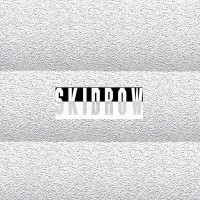

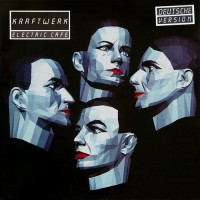
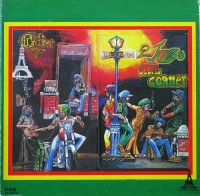
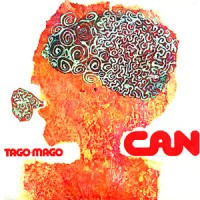
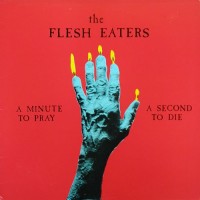
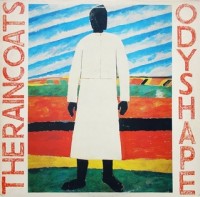
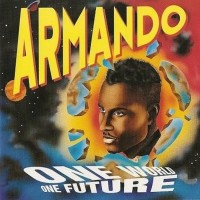
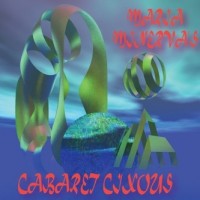
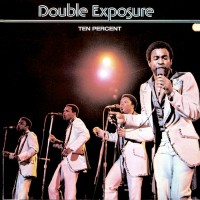
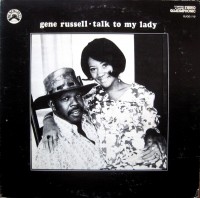
 Gene Russell himself made the recordings on Black Jazz happen. His best known album “Talk To My Lady” was self-released via the label and prior to that he had one obscurity lost in the shuffle from Decca. “Talk To My Lady” features a very interesting rework of “My Favorite Things” that alone is worth the price of admission…
Gene Russell himself made the recordings on Black Jazz happen. His best known album “Talk To My Lady” was self-released via the label and prior to that he had one obscurity lost in the shuffle from Decca. “Talk To My Lady” features a very interesting rework of “My Favorite Things” that alone is worth the price of admission…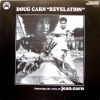 Doug Carn was most prolific for the Oakland label in the early 70s, putting out a release typically once a year. A principal funk and soul player back in the day, his style of jazz-funk was spacey but starkly recorded in contrast to Herbie’s sci-fi releases. Theo’s compilation features his infectious “Trance Dance” track, miles away from his earlier work with Earth Wind and Fire.
Doug Carn was most prolific for the Oakland label in the early 70s, putting out a release typically once a year. A principal funk and soul player back in the day, his style of jazz-funk was spacey but starkly recorded in contrast to Herbie’s sci-fi releases. Theo’s compilation features his infectious “Trance Dance” track, miles away from his earlier work with Earth Wind and Fire.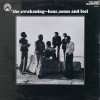 The Awakening produced little but left a big impression in the way that reminds one of the Art Ensemble rhythm section, but not so much Roscoe or Lester, more like a conventional modal horn and reed format. Their work could move from tight and funky to cool. Only two albums were released by Black Jazz before they dissipated.
The Awakening produced little but left a big impression in the way that reminds one of the Art Ensemble rhythm section, but not so much Roscoe or Lester, more like a conventional modal horn and reed format. Their work could move from tight and funky to cool. Only two albums were released by Black Jazz before they dissipated.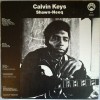 Calvin Keys is a real heavy hitter from Omaha, Nebraska. As a jazz guitarist he has lent his talents to Ray Charles, Ahmad Jamal, Joe Henderson, Sonny Stitt, and later even M.C. Hammer! His playing is the least free but with plenty of flaying, and he’s confidently subtle in swing. Washes of cymbal crashes are a perfect foil for his pristine R&B spillage.
Calvin Keys is a real heavy hitter from Omaha, Nebraska. As a jazz guitarist he has lent his talents to Ray Charles, Ahmad Jamal, Joe Henderson, Sonny Stitt, and later even M.C. Hammer! His playing is the least free but with plenty of flaying, and he’s confidently subtle in swing. Washes of cymbal crashes are a perfect foil for his pristine R&B spillage.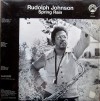 Rudolph Johnson was also a Ray Charles acolyte who made a name for himself as a solid and dedicated tenor sax player. He was virtually unknown outside his crowd in Oakland, where he recorded two Black Jazz LPs. Talented in equal measure, pianist John Barnes and drummer Ray Pounds helped Johnson create maybe the most conventional but tempered music on the label.
Rudolph Johnson was also a Ray Charles acolyte who made a name for himself as a solid and dedicated tenor sax player. He was virtually unknown outside his crowd in Oakland, where he recorded two Black Jazz LPs. Talented in equal measure, pianist John Barnes and drummer Ray Pounds helped Johnson create maybe the most conventional but tempered music on the label.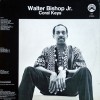 Walter Bishop Jr. may have the highest rep, having played with Charlie Parker, Art Blakey and Stan Getz, but he only managed to put out one album as leader for Black Jazz. One turns out to be enough however: the ever desirable jazz flute is all over this LP, and an unexpected Latin influence presides. That makes it a unique release from this label already on the peripheral.
Walter Bishop Jr. may have the highest rep, having played with Charlie Parker, Art Blakey and Stan Getz, but he only managed to put out one album as leader for Black Jazz. One turns out to be enough however: the ever desirable jazz flute is all over this LP, and an unexpected Latin influence presides. That makes it a unique release from this label already on the peripheral.